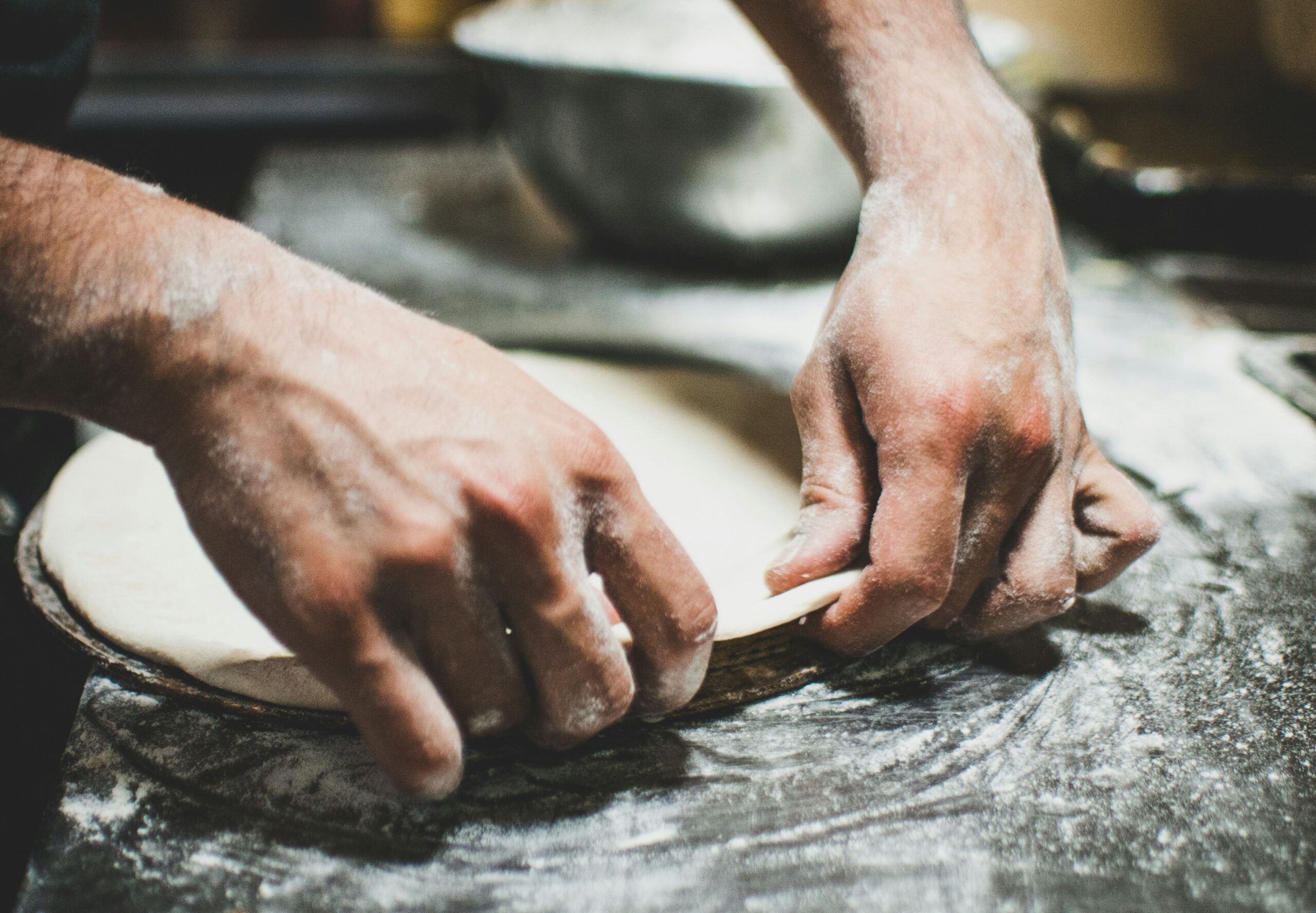How to Make Pizza: A Step-by-Step Guide

Introduction to Pizza Making
Pizza, a beloved dish worldwide, traces its origins back to ancient civilizations where flatbreads were topped with various ingredients. However, the modern concept of pizza, as we know it today, began in Naples, Italy during the 18th century. The Neapolitan pizza, characterized by its thin, soft crust and simple toppings like tomato, mozzarella, and basil, laid the foundation for numerous pizza variants that have since emerged.
As pizza gained international acclaim, different regions began to develop their unique styles. New York-style pizza, for instance, is famous for its large, foldable slices and crispy yet pliable crust, often topped with a blend of mozzarella cheese and tomato sauce. In contrast, Chicago deep-dish pizza is known for its thick, buttery crust and substantial layers of cheese, toppings, and chunky tomato sauce, baked in a deep pan.
Beyond these well-known styles, there are countless other variations, including Sicilian, Detroit, and California-style pizzas, each offering a distinct taste and texture experience. Whether you prefer a thin-crust pizza or a thick, hearty slice, the diversity in pizza styles ensures there is something for everyone.
To begin your pizza-making journey at home, you’ll need a few essential ingredients: flour, yeast, water, salt, and olive oil for the dough, along with tomato sauce, cheese, and your choice of toppings. Quality ingredients can significantly enhance the flavor of your homemade pizza, so it’s worth investing in fresh, high-quality produce.
In addition to ingredients, having the right kitchen tools and equipment can make the process smoother and more enjoyable. A good pizza stone or baking steel can help achieve a crispy crust, while a pizza peel will make transferring the pizza in and out of the oven easier. Other useful tools include a rolling pin, dough scraper, and a sharp pizza cutter.
With a foundational understanding of pizza’s history, the variety of styles available, and the basic ingredients and tools required, you’re well-prepared to embark on the delightful endeavor of making pizza at home.
Preparing the Dough
Creating the perfect pizza begins with preparing the dough, a fundamental step that sets the stage for your culinary creation. To make pizza dough from scratch, gather the following essential ingredients: 4 cups of all-purpose flour, 1 packet of active dry yeast, 1 1/2 cups of warm water, 2 teaspoons of salt, and 2 tablespoons of olive oil. These components work in harmony to create a base that is both flavorful and structurally sound.
Start by activating the yeast. In a small bowl, combine warm water and yeast, allowing it to sit for about 5 minutes until it becomes frothy. This indicates that the yeast is active and ready to work its magic. In a large mixing bowl, combine the flour and salt, forming a well in the center. Pour the yeast mixture and olive oil into the well, gradually mixing with a wooden spoon until a shaggy dough forms.
Turn the dough out onto a lightly floured surface and begin kneading. This process, which should take about 10 minutes, develops the gluten in the flour, resulting in a dough that is elastic and smooth. If the dough feels too sticky, sprinkle in a bit more flour; if too dry, add a few drops of water. The goal is to achieve a balanced consistency that is neither too wet nor too dry.
Once kneaded, shape the dough into a ball and place it in a lightly oiled bowl, turning it to coat all sides. Cover the bowl with a damp cloth and let the dough rise in a warm, draft-free area for about 1 to 1 1/2 hours, or until it has doubled in size. This rising time is crucial as it allows the dough to develop flavor and a light, airy texture.
For those with dietary restrictions, alternative dough recipes are available. A gluten-free dough can be made using a blend of gluten-free flours and xanthan gum, while whole wheat dough offers a more nutritious option with a denser texture. Regardless of the variation, the principles of mixing, kneading, and rising remain the same.
Avoid common pitfalls such as using water that is too hot, which can kill the yeast, or failing to knead the dough sufficiently, which can result in a dense crust. By following these steps carefully, you will achieve a pizza dough that is the perfect foundation for your toppings.
Crafting the Perfect Sauce and Toppings
Creating a delicious pizza begins with an outstanding sauce. A basic tomato sauce forms the foundation for many pizzas. To start, gather the following ingredients: one can of crushed tomatoes, two cloves of minced garlic, a tablespoon of olive oil, a teaspoon of dried oregano, a pinch of red pepper flakes, and salt to taste. Heat the olive oil in a saucepan over medium heat, then sauté the garlic until fragrant. Add the crushed tomatoes, oregano, red pepper flakes, and salt. Simmer for 20 minutes, stirring occasionally.
Beyond the traditional tomato sauce, other options can add unique flavors to your pizza. Pesto sauce, made from fresh basil, pine nuts, garlic, Parmesan cheese, and olive oil, introduces a rich, herbaceous element. A white sauce, often a béchamel base, offers a creamy alternative perfect for gourmet toppings like mushrooms and truffle oil. Barbecue sauce provides a smoky, sweet contrast that pairs well with chicken and red onions.
Fresh ingredients are paramount in achieving a flavorful pizza. When selecting toppings, consider a balance of textures and flavors. Cheese is a cornerstone; mozzarella is the classic choice, but blending it with provolone or gouda can enhance meltiness and taste. Vegetables should be fresh and cut to a uniform size to ensure even cooking. Popular choices include bell peppers, onions, mushrooms, and olives. For a burst of flavor, consider adding ingredients like sun-dried tomatoes or roasted garlic.
Meats, such as pepperoni, sausage, and prosciutto, add savory depth. However, they should be used sparingly to avoid overwhelming the other flavors. Fresh herbs like basil, oregano, and thyme can provide an aromatic finish. Lastly, balancing flavors is crucial. A successful pizza combines sweet, savory, and spicy elements, creating a harmonious and satisfying dish. Experiment with different combinations to discover your perfect pizza.
Baking and Serving the Pizza
Once your pizza is assembled, the next crucial step is baking. The baking process can significantly influence the final product, so it is essential to follow guidelines to achieve a perfectly baked pizza.
Preheating the oven is a vital initial step. Whether you use a pizza stone, baking sheet, or an outdoor pizza oven, it is crucial to preheat it to the correct temperature. For a standard home oven, preheat it to 475°F (245°C) for at least 30 minutes to ensure it is adequately heated. If you are using a pizza stone, place it in the oven while it is preheating to allow the stone to reach the desired temperature. For outdoor pizza ovens, follow the manufacturer’s instructions, but generally, they should be preheated to around 700°F (370°C).
Next, consider the method of baking. A pizza stone will distribute heat evenly and absorb moisture, resulting in a crispy crust. Alternatively, a baking sheet can be used if you do not have a pizza stone. For a more authentic flavor, an outdoor pizza oven can provide high heat and a smoky taste. Each method has its benefits, but the key is to ensure an even bake by rotating the pizza halfway through the cooking time.
Transferring the pizza to and from the oven requires care to avoid damaging it. A pizza peel dusted with flour or cornmeal can help slide the pizza onto the stone or baking sheet. If you do not have a peel, the back of a baking sheet can be used as a makeshift alternative. Gently slide the pizza onto the preheated surface and monitor it closely. Bake the pizza for 10-15 minutes, or until the crust is golden and the cheese is bubbly and slightly browned.
Once baked, carefully remove the pizza using the peel or baking sheet. Allow it to cool for a few minutes before slicing. Use a sharp pizza cutter or a large knife to make clean cuts. Serve the pizza hot, and consider pairing it with side dishes like a fresh green salad, garlic bread, or antipasto. Beverages such as a crisp beer, a glass of red wine, or a refreshing soda can complement the meal perfectly.











